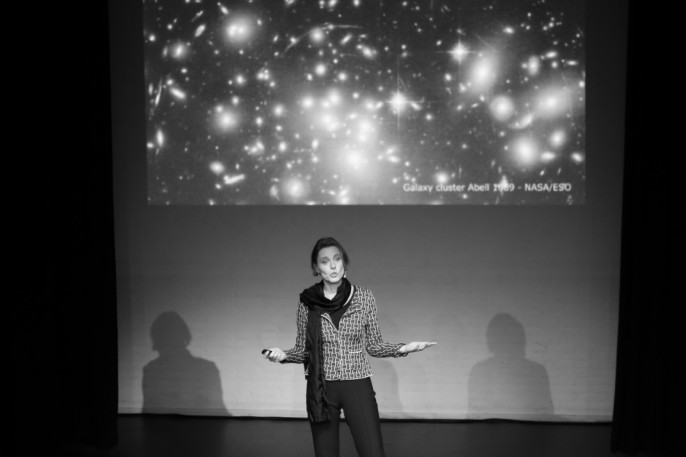TEDxDelftWomen 2015 | Dr. Daphne Stam | Observing ourselves to find others

“For many generations we have wondered if we are alone,” says Dr Daphne Stam. Earth is home to a large variety of lifeforms, from primitive organisms to human beings. Rather than having telescopes point outwards, Stam argues that the best way to find life is by taking a selfie of Earth.
Stam is an Associate Professor of Planetary Sciences at the TU Delft Faculty of Aerospace Engineering. What she finds particularly interesting is the atmosphere of planets, both in our solar system and beyond, and observing that in order to detect life. Venus was thought to support life, but the planet is subject to extreme gas house effects, not even fruit flies could survive there. Mars was also considered a planet suitable for life, but due to low temperatures life on the surface is unlikely.
“There are billions of stars with planets of different compositions orbiting them. “But it is difficult to take good pictures of them.” When Voyager 1 was 6 billion kilometers away from Earth, it took a picture of the planet. On the photo Earth is but a small blue dot. “How would you know whether there is life on a planet with images of planets even further away?” she asks. Snapshots are not sufficient. Stam argues that observations over time measuring changes of colors, brightness and the specific directions of light waves bouncing off planets will help understand if a planet has the capability to support life.
In order to know what to look for Stam wants to apply this approach to Earth. “We’re building an instrument that can measure these small wave direction and color changes to make these types of observations of Earth.” The intention is to place it on the moon, where it can operate autonomously and can clearly see all of Earth as well as its rotation. This will help identify what to look for when observing other planets. “I look forward to the day we will be able to observe ourselves from the moon with our instrument.”
